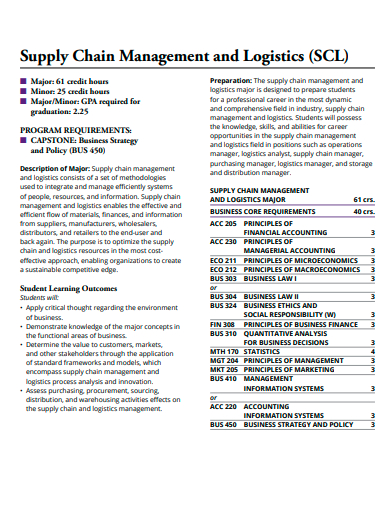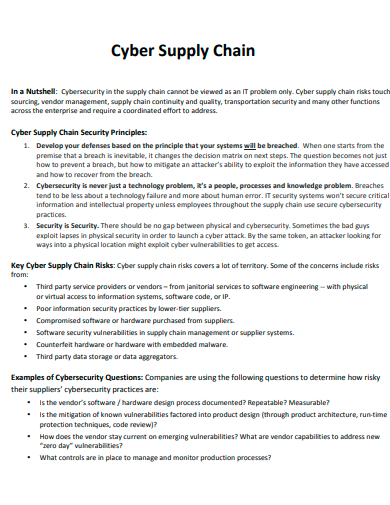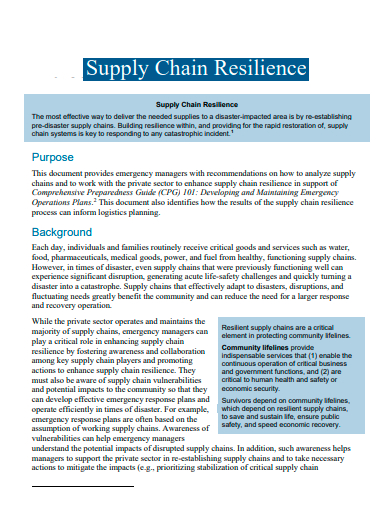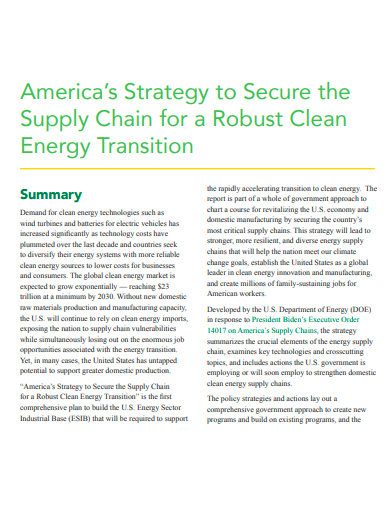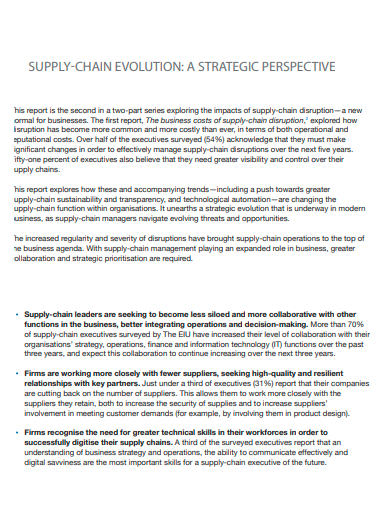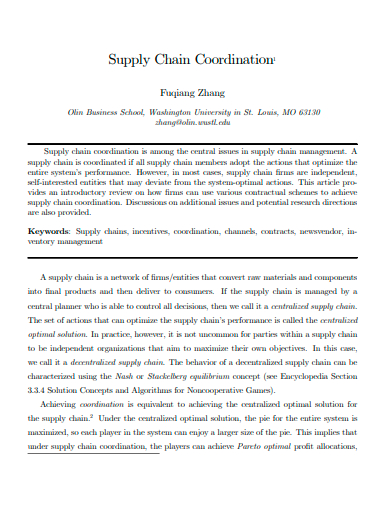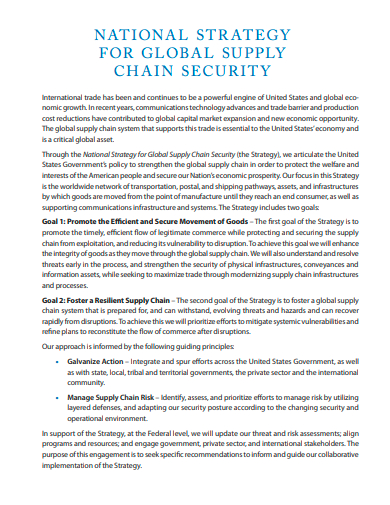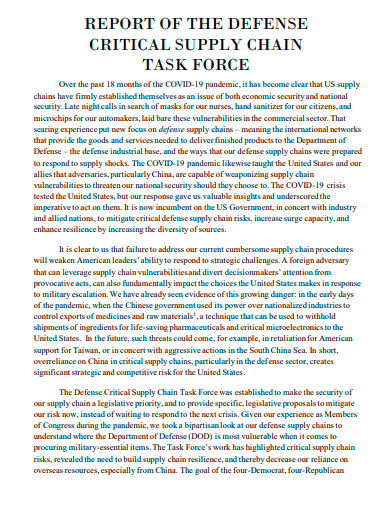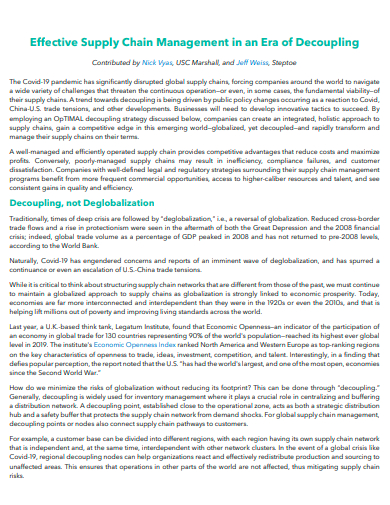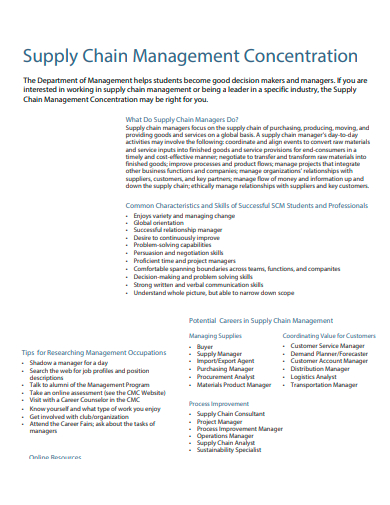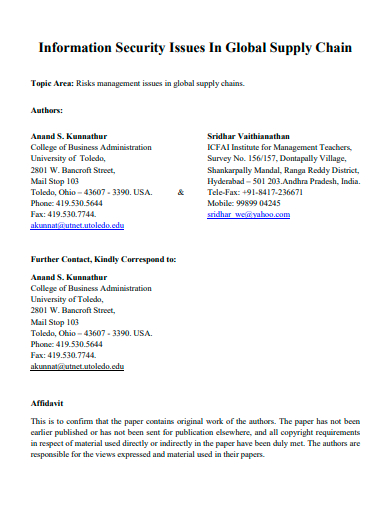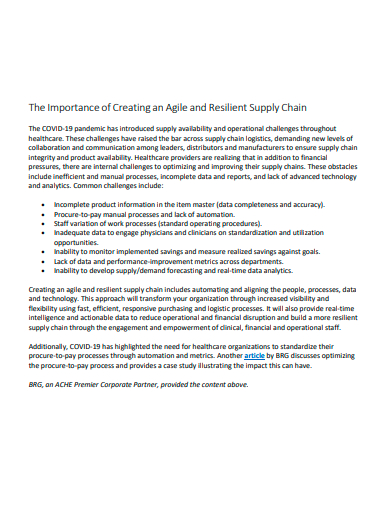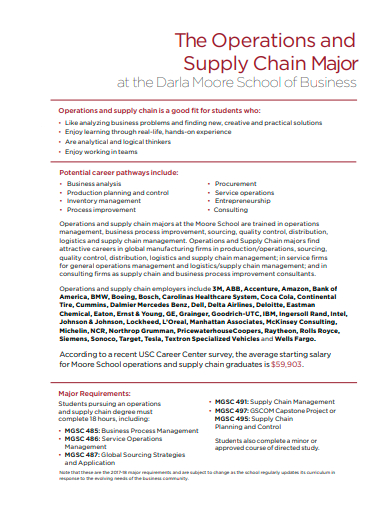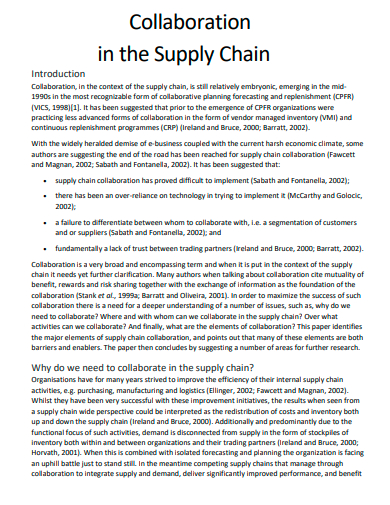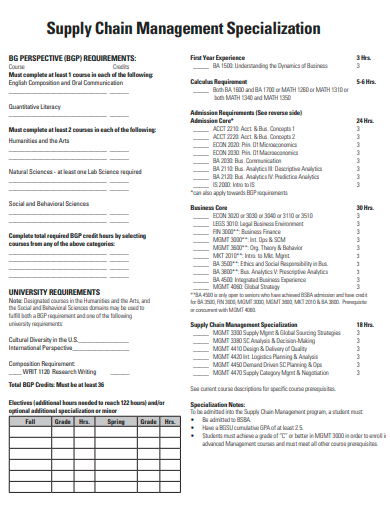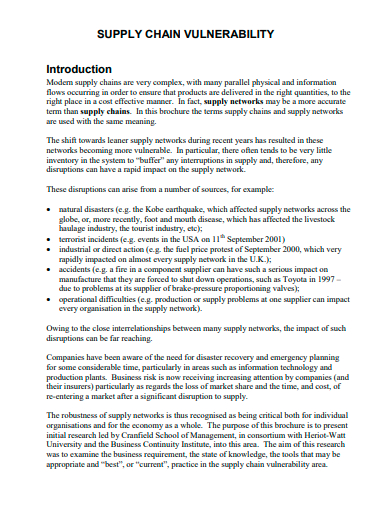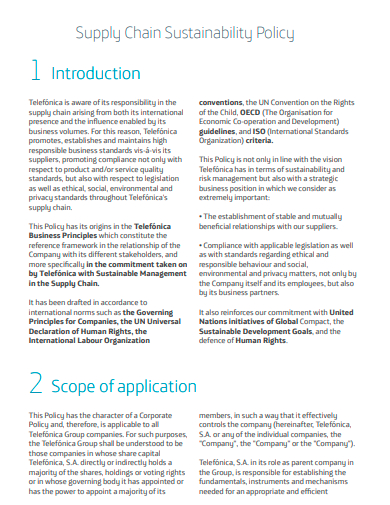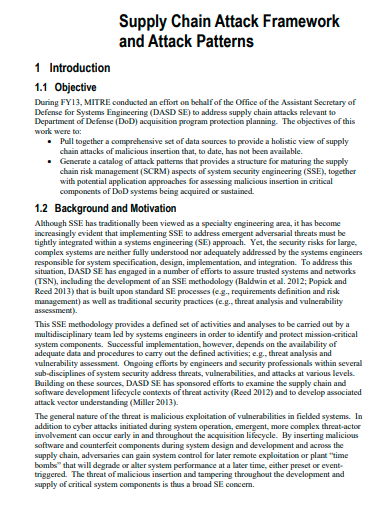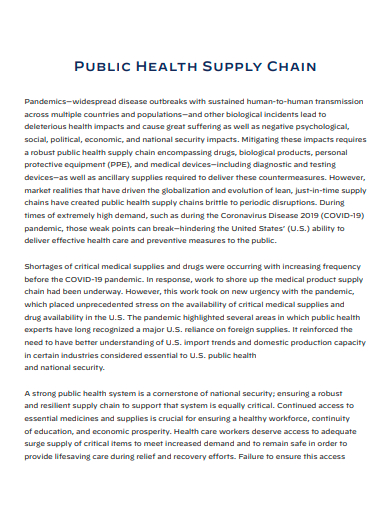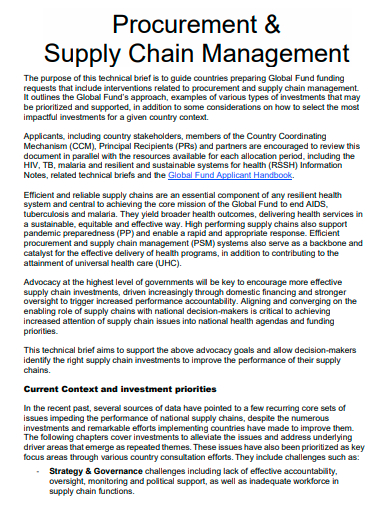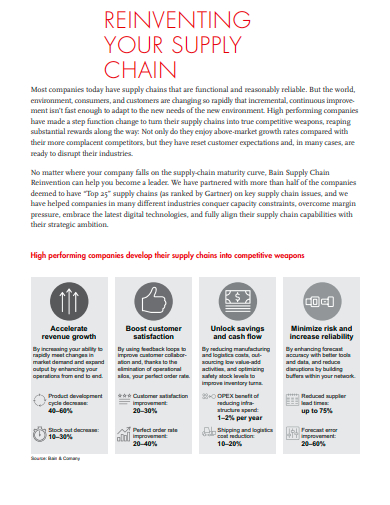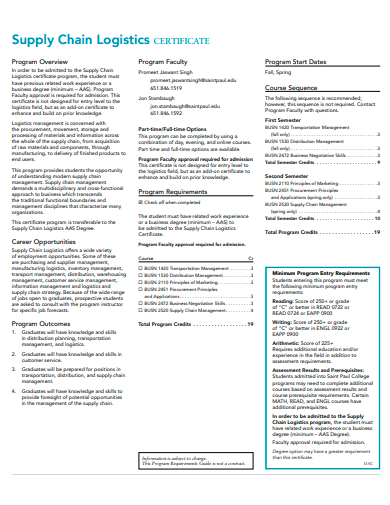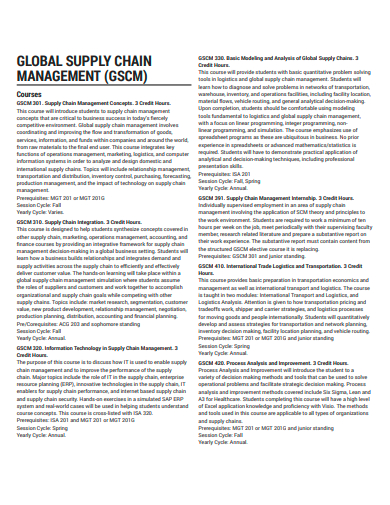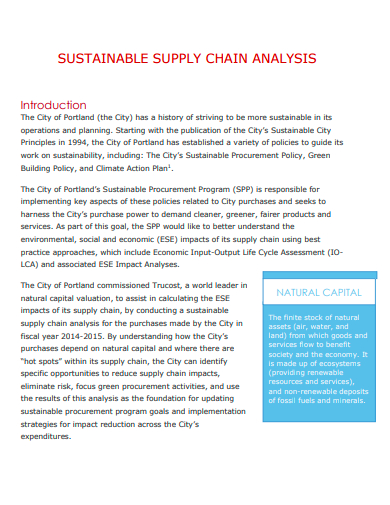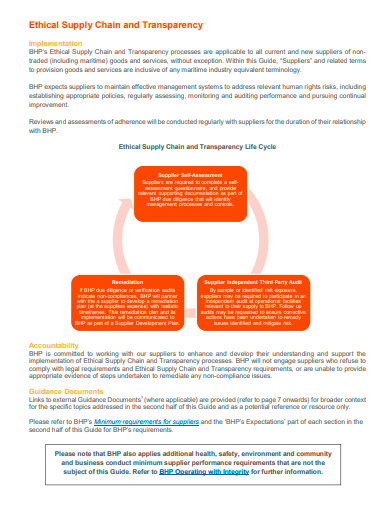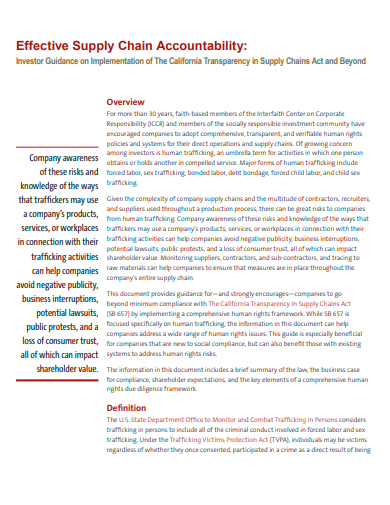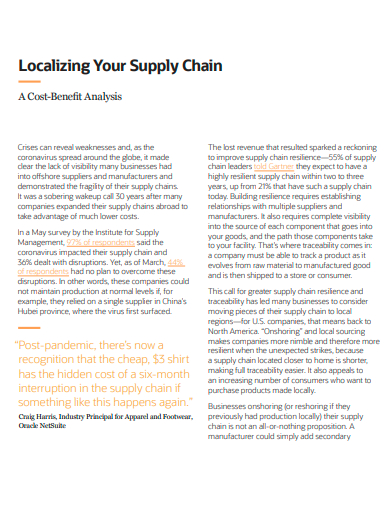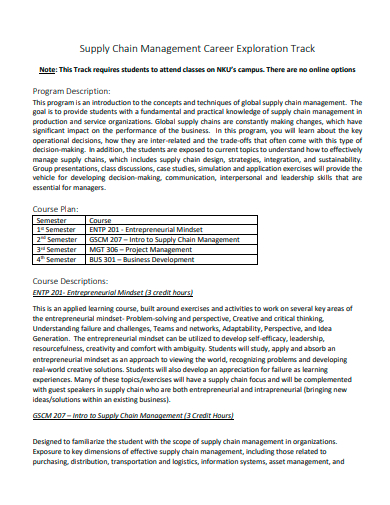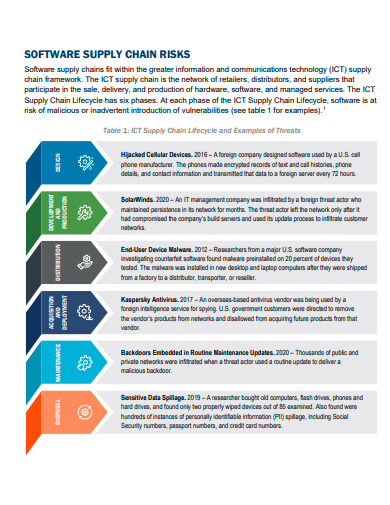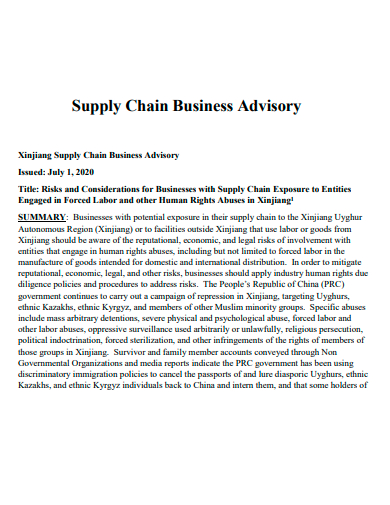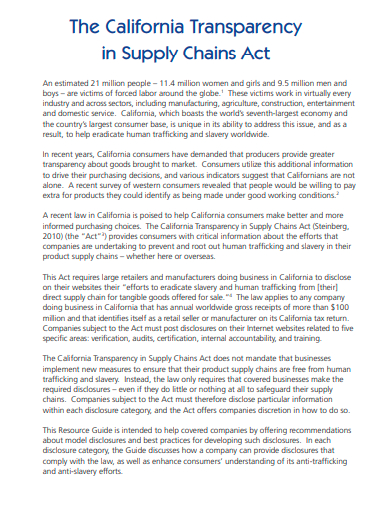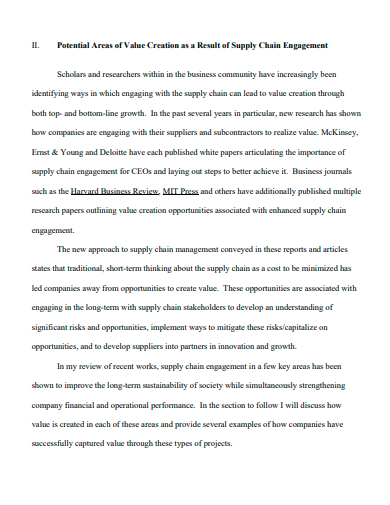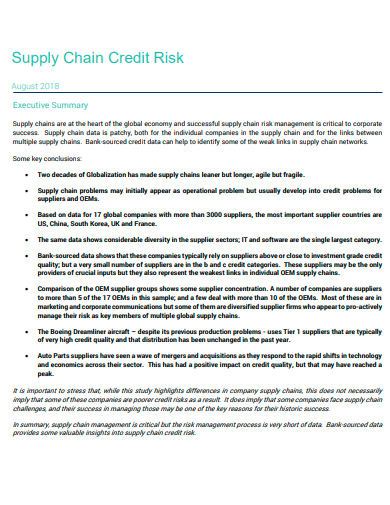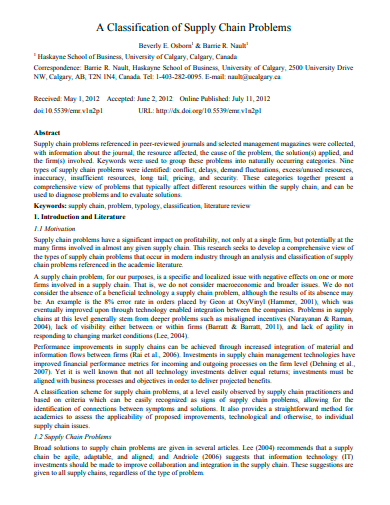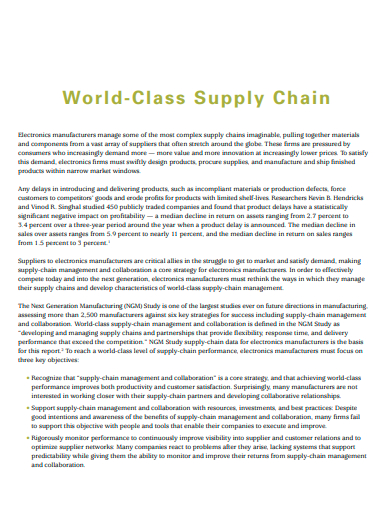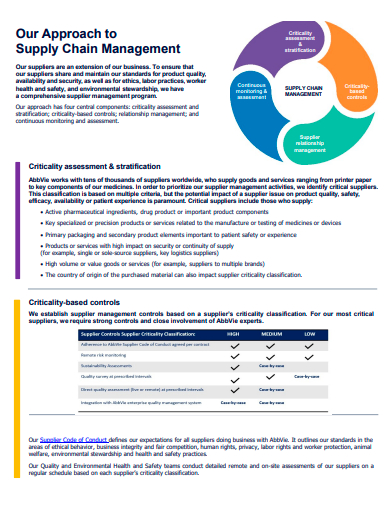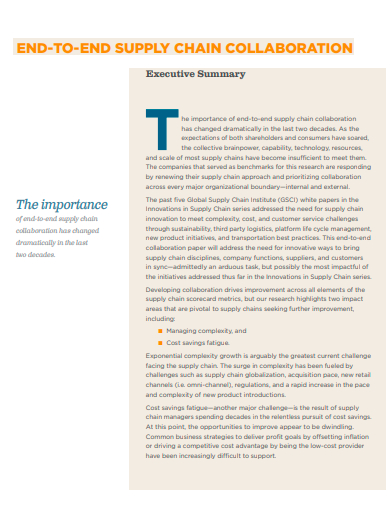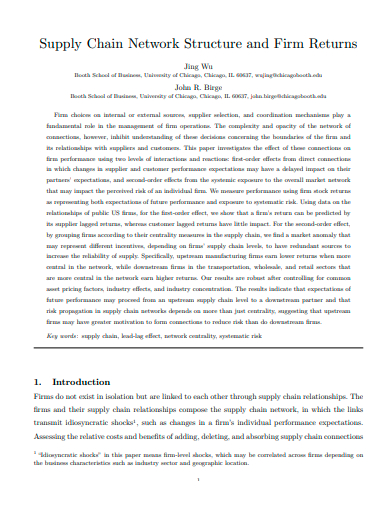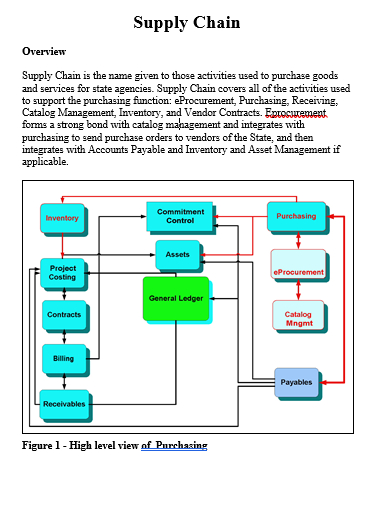When carrying out a situation analysis as part of the strategic planning process, one of the most important steps is to map out a supply chain. A company can better define its market and determine where it wants to be in the future if the supply chain has been clearly laid out for them. It is one reason why it is crucial. When developing strategies at the corporate level, a company will frequently need to decide whether it will focus on a single line of company business, expand into other related or unrelated industries, or remain in its current industry. The extraction of raw materials and manufacturing a product are two examples of distinct industries that make up different stages of the supply chain.
FREE 50+ Supply Chain Samples
1. Supply Chain Management and Logistics
2. Agri-Food Supply Chain
3. Cyber Supply Chain
4. Supply Chain Resilience
5. Supply Chain for a Robust Clean Energy Transition
6. Supply Chain Evolution
7. Supply Chain Coordination
8. Global Supply Chain Security
9. Report of Defense Critical Supply Chain
10. Supply Chain Sustainability
11. Supply and Value Chain Management
12. Supply Chain Management Curriculum Model
13. Effective Supply Chain Management
14. Supply Chain and Operations Management
15. Supply Chain Management Concentration
16. Information Security Issues In Global Supply Chain
17. Stability in Supply Chain Networks
18. Agile and Resilient Supply Chain
19. Designing the Distribution Network in a Supply Chain
20. Operations and Supply Chain Major
21. Collaboration in Supply Chain
22. Supply Chain Management Specialization
23. Supply Chain Vulnerability
24. Transparency Supply Chain
25. Supply Chain Sustainability Policy
26. Supply Chain Attack Framework
27. Public Health Supply Chain
28. Procurement and Supply Chain Management
29. Reinvesting Supply Chain
30. Supply Chain Logistics
31. Millennial Supply Chain
32. Global Supply Chain Management
33. Sustainable Supply Chain Analysis
34. COVID-19 Supply Chain Task Force
35. Ethical Supply Chain and Transparency
36. Effective Supply Chain Accountability
37. Localizing Supply Chain
38. Supply Chain Management Career Exploration Track
39. Software Supply Chain Risks
40. Supply Chain Risk Management
41. Supply Chain Business Advisory
42. Supply Chain Act
43. Supply Chain Engagement
44. Supply Chain Credit Risk
45. Supply Chain Management Concentration Academic Map
46. Supply Chain Problems
47. World Class Supply Chain
48. Approach to Supply Chain Management
49. End-to-End Supply Chain Collaboration
50. Supply Chain Network Structure and Firm Returns
51. Supply Chain in DOC
What Is a Supply Chain?
A supply chain is a network of individuals and businesses involved in producing a product and delivering that product to the end user. When the van brings the final product to the end user, the last link in the chain is complete. The manufacturers of the raw materials are the first link in the chain. The part of the supply chain responsible for finished good delivery from the point of manufacture to the point of consumption is referred to as the distribution channel.
How To Make a Supply Chain?
Supply chain management, also known as SCM, refers to monitoring and controlling all of the activities necessary for a company to transform raw materials into finished products that can then be sold to end-users. You can use the steps that are listed below as a guide to help you establish a supply chain.
1. Evaluate your Current Supply Pipeline
Start with an examination of your company’s operations from the inside. Investigate how you have obtained the goods or services you have used up to this point. What aspects worked well, and which ones presented challenges? Which of the businesses were open to a long-term partnership with you, and which of the companies were less than ideal for a potential working relationship? Review all the available documentation and make an effort to categorize your existing supply management pipeline as “good” or “bad.”
2. Outline Supply Management
Your company’s procurement strategy can be made more standardized with the help of a written document known as a supply chain management. As a result, you ought to get started writing it with the intention of creating a permanent template that your company’s sales department can use for the foreseeable future. To get started, begin by outlining the fundamental information about your company on the front page.
3. Quality Assurance
Your company’s quality assurance (QA) specifics should be incorporated into the supply chain management, considering the warehousing units and technology at your disposal. Your employees and the procurement companies you work with will have access to a wealth of information as a result, including what items can and cannot be stored on your property.
4. Breakdown Supply Needs
In supply chain management, you should see the list of the goods you require from a supplier to provide rapid and simple access. This list may be presented as a spreadsheet, a bulleted list, or a chart with envisioned supply elements, depending on the business sector in which you operate.
What Is an Illustration of an Existing Supply Chain?
Acquiring raw materials is the first step in producing a good or service, which can involve mining for diamonds, tanning leather, or producing sheet metal.
What are the four primary components of supply chain management?
Integration, operations, purchasing, and distribution are the four components of the supply chain that collaborate to create a path to cost-effective and competitive competition. Integration, operations, and purchasing are the four components of the distribution.
What are the three foundations of the supply chain?
Purchasing (also known as sourcing), Planning (also known as scheduling), and Logistics are generally considered to be the most important aspects of Supply Chain management (delivery).
Management of the supply chain is essential because it can assist in the accomplishment of a variety of business goals. For example, exercising control over the manufacturing processes can result in higher product quality. This, in turn, helps lower the risk of product recalls and legal action while also contributing to developing a solid consumer brand.
Related Posts
FREE 10+ Vertical Merger Samples in PDF DOC
FREE 10+ Vendor Form Samples in PDF
FREE 10+ Wholesale Distributor Agreement Samples in MS Word ...
FREE 10+ Ethical Statement Samples [ Approval, Research ...
FREE 10+ Product Supply Contract Samples in MS Word Google ...
FREE 10+ ROI Template Samples in PDF MS Word
FREE 8+ Manufacturing Company Profile Samples [ Garment ...
FREE 8+ Vertical Integration Samples in PDF
FREE 7+ Industry Value Chain Analysis Samples [ Coffee ...
FREE 6+ Distribution Channel Management Samples in PDF
FREE 11+ Retail Risk Assessment Samples in PDF MS Word
FREE 10+ Vendor Request for Proposal Samples in MS Word ...
FREE 10+ Logistics Proposal Samples [ Service, Project ...
FREE 6+ Logistics Business Plan Samples [ Continuity, Startup ...
FREE 6+ Inventory Risk Management Samples in PDF DOC

